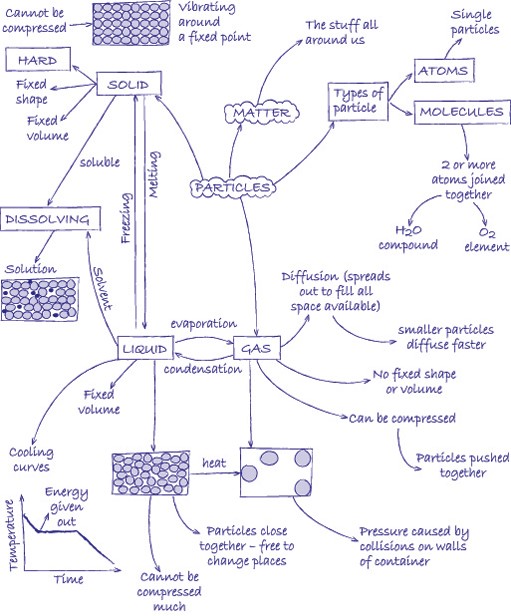Resource 5: Revising with mind maps and concept maps
![]() Teacher resource to support teaching approaches
Teacher resource to support teaching approaches
Revision tools
Students find revision quite difficult. They will probably have an exercise book containing notes. One technique is to read through the notes and to try and remember them. However, this is not always effective. It can be difficult for students to concentrate when reading – especially if English is not their first language.
More active approaches to revision include making summaries on posters or on small cards (or small pieces of paper) that can easily be carried around. Students can invent questions and then work in pairs to test each other on the work. Two particular approaches are concept maps and mind maps.
Concept maps and mind maps are tools which help learners visualise a topic.
A concept map is a hierarchical diagram which shows the relationships between concepts. The concepts are usually represented by circles or squares. The shapes are connected by lines or arrows. Words on the arrows provide linking phrases, such as ‘leads to’, ‘results in’, ‘includes’, ‘necessary for’ or ‘shows’. Drawing a concept map is a good way of organising your thoughts. It helps you to understand how concepts are linked together and sometimes to see connections between concepts that you hadn’t thought of before.
A mind map is a diagram in which ideas and words are arranged around a key central word or idea. Mind maps can be put together quickly, often as a result of a brainstorming session. They can be very helpful for revision, especially for people who learn more easily by looking at pictures.
Mind maps and concept maps are only really helpful for the person who drew them. It is often the process of drawing them that is more helpful than the finished product.
Both techniques are helpful for revision.


Resource 4: Marking criteria for posters



